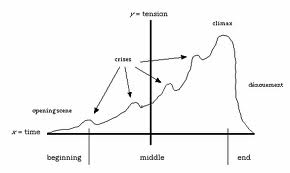 I am madly writing in order to reach a deadline for my new novel, so my blog has been neglected lately. But there’s always time for some thoughts on craft, especially when in the throws of finishing a novel. Today, author and writing mentor Sydney Smith and I talk about character arcs.
I am madly writing in order to reach a deadline for my new novel, so my blog has been neglected lately. But there’s always time for some thoughts on craft, especially when in the throws of finishing a novel. Today, author and writing mentor Sydney Smith and I talk about character arcs.
SYDNEY:-
A character arc is the journey a character takes through the course of a story, from someone whose actions and decisions are shaped by their internal antagonist (also known as their character flaw), to someone who has modified or overcome their internal antagonist and is rewarded with the thing or person they most want in the world.
 Mr Darcy in Pride and Prejudice is a good example. He begins the story being proud and disdainful of others, judging people on their social standing, and ends by having a more open and accepting attitude. His reward is marriage to the woman he loves.
Mr Darcy in Pride and Prejudice is a good example. He begins the story being proud and disdainful of others, judging people on their social standing, and ends by having a more open and accepting attitude. His reward is marriage to the woman he loves.
In The Last Coyote, by Michael Connelly, Harry Bosch’s internal antagonist is his refusal to accept that he is having a mental breakdown which is endangering the welfare of himself and others. Through the course of his investigation into the murder of his mother many years ago, he is confronted with the consequences of his reckless refusal to acknowledge that he is dangerous. His actions bring about the torture and murder of his supervising officer. By the end of the novel, he has acknowledged his flaw and has changed it. His reward is the solution to his mother’s murder.
The important thing to note is the vital role of the internal antagonist. If the character has no internal antagonist to overcome, they cannot change. They will be at the end of the story the same person they were at the start. Their circumstances will be different. But they themselves will not be different. They will not have learned an important lesson about themselves. They will not have been tested and will not have met that challenge.
JENNY:-
 When planning my character arcs, I focus on the personal lie the protagonist lives by. What false belief about himself and/or the world is causing his life to be unfulfilled?This fundamental misconception can take many forms, but it must be deep-seated – influencing the character’s every thought and action. Usually it can be simply stated in a sentence. For example, in A Christmas Carol, Scrooge believes a man’s worth is based on how much money he makes. In Schindler’s Ark, Schindler believes it is okay to exploit other people for profit. In Toy Story, Woody believes that his worth only lies in being the favourite. In Jane Eyre, Jane believes the only way to earn love is by serving other people.
When planning my character arcs, I focus on the personal lie the protagonist lives by. What false belief about himself and/or the world is causing his life to be unfulfilled?This fundamental misconception can take many forms, but it must be deep-seated – influencing the character’s every thought and action. Usually it can be simply stated in a sentence. For example, in A Christmas Carol, Scrooge believes a man’s worth is based on how much money he makes. In Schindler’s Ark, Schindler believes it is okay to exploit other people for profit. In Toy Story, Woody believes that his worth only lies in being the favourite. In Jane Eyre, Jane believes the only way to earn love is by serving other people.
The lie is born of a wound in the character’s past. Barely realised at first, it acts as an obstacle to achieving his goals. I always identify this lie right at the beginning. It becomes the foundation for planning the character’s transformative journey.
SYDNEY:-
 That’s an interesting take on the issue of internal antagonist, Jenny. Some people put it that way, as a lie the character tells themselves, or a secret they keep from themselves. Whichever way the writer phrases it to themselves, the vital thing is that they understand ths aspect of character and the role it plays in the story as a whole.
That’s an interesting take on the issue of internal antagonist, Jenny. Some people put it that way, as a lie the character tells themselves, or a secret they keep from themselves. Whichever way the writer phrases it to themselves, the vital thing is that they understand ths aspect of character and the role it plays in the story as a whole.
As a teacher and manuscript assessor, I have seen how writers avoid this whole concept of internal antagonist. They desperately want their character to be liked, and believe the best way to achieve that is by making them free of this kind of character flaw. But that is death to a character. Readers want to identify with flawed people. The great stories in literature show that the flawed characters are the ones we love and who endure.
So I look for ways to help writers get around that fear of making their character flawed and unlikeable. Sometimes, it’s simply the way it’s expressed. I thinking referring to the internal antagonist as a lie or a secret is a good way of doing that. I’ll have to use it in future!




